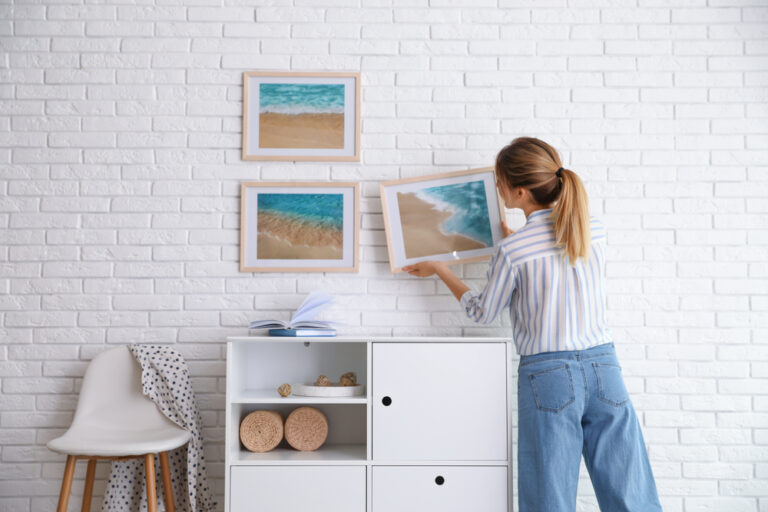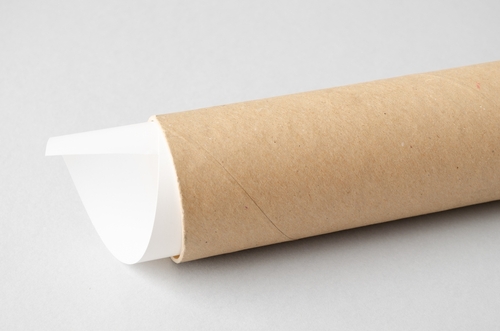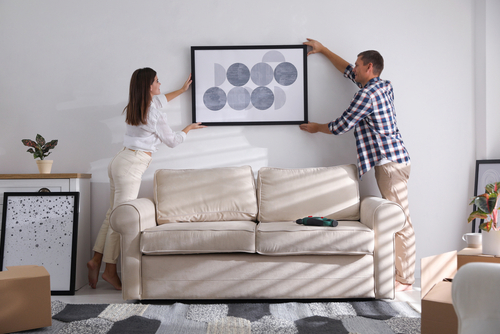Supplies We Recommend
Before starting the packing process, make sure you’re prepared with the proper supplies. Bekins offers high-quality packing supplies, including shipping boxes for framed pictures, that can protect even the most fragile specialty items.
- Specialty boxes have both inner and outer protection for frames and glass, so there’s less chance of breakage.
- Extra cardboard boxes for bolstering frames and DIY box creations
- Acid-free tissue paper or archival-quality foam to ensure the art stays preserved in perfect condition. Find it at art stores and frame shops.
- Painter’s tape
- Packing tape
- Bubble wrap
- Packing paper
- Scissors
- Marker
- Protective paper. We don’t recommend choosing newspaper, which has inks that can stain your art. Large rolls of plain newsprint paper can usually be found on Amazon or in office supply stores.
- Shipping tubes (alternative options include PVC, carpet or rug tubes)
- Envelopes (only if packing folded posters)

How to Pack Framed Pictures and Art for Moving
How to Wrap Pictures for Moving
If your boxes don’t include inner protection for your frames, protect the glass using this method:
- Lay your artwork down on a large, soft surface such as a bed or a table with a blanket on top.
- For paintings, start by placing a sheet of the special foam or tissue paper in front of the work as directed by the material manufacturer.
- Place painter’s tape in vertical and horizontal lines on the glass, then add diagonal tape sections for more security. If the glass is broken during the move, the pieces will stick to the tape instead of puncturing the artwork.
- Wrap the artwork, frame down, in packing paper and tape it to secure.
- Then, tape a stiff piece of cardboard to the front and back of the artwork frames.
- Next, wrap the cardboard-fortified pieces in bubble wrap and secure the wrap. It’s important to use bubble wrap rather than packing peanuts because styrofoam peanuts can depress or mark the textures in unglazed artwork, including oil paintings and prints that have no glass fronts.
- Place the piece in its box and secure it, then label it FRAGILE. You’re finished and ready to move on to the next artwork!
For visual inspiration, check out the Mirrors & Artwork video in our helpful packing tips video library.
If you’re worried about damaging high-value artwork, ask your moving agent about specialty art movers. Professional art movers can pack and move your art collection for you. They’ll offer insurance and other protection for your gallery-worthy framed artwork, enhancing your peace of mind.
Packing Multiple Frames
In general, we recommend avoiding packing multiple frames close together to reduce their chances of breaking. But if you must, here are some tips:
- Stand the frames upright; never lay them down flat or stack them.
- Place cardboard separators between frames.
- Use lots of padding between frames and at the top, bottom and sides of the box.
Packing Rolled Posters
Dos:
- Roll paper posters to a diameter of 1 1/2 to 2 inches.
- Roll cardstock posters to a diameter no smaller than 3 inches.
- Once the poster is at your desired diameter, roll it in a sheet of protective paper, then cushion it with bubble wrap.
- Secure the bubble wrap with tape so that the poster won’t unroll.
- Place the poster in a durable shipping tube meant specifically to protect posters. Order hard tubes that won’t bend at the slightest touch.
- Alternatively, consider using clean, three- or four-inch-diameter PVC tubes. Carpet and rug tubes are also suitable for poster packing.
- Leave an air cushion all around the rolled poster when it’s in a packing tube. This makes it less likely to be dented if the tube gets slightly crushed during transit.
- Use bubble wrap or crumpled plastic grocery bags to cushion the ends of your poster. If left to slide up and down the tube, the poster’s edges can become bent and damaged by hitting the ends of the tube.
- Secure end caps carefully so that they don’t fall off during your move.
- If you use a long triangular shipping box to pack a rolled poster, always use another tube inside the triangular box for added protection.
Don’ts:
- Don’t use rubber bands or other materials to hold the rolled posters.
- Don’t use leftover wrapping-paper tubes or other flimsy tubes to pack your posters.
- Don’t use PVC tubes with dust or other contaminants inside.
- Don’t just roll up your poster, slip it in the tube, and let it expand to fill the tube space. Rolled posters should avoid touching the sides of their packing tubes.
- Don’t place a rolled poster in a triangular box without additional cushioning.
Packing Folded Posters
While folding posters for moving isn’t generally recommended, if you’re moving posters that were previously folded, you can pack them again in the folded position. Just be sure and use the original folds as you prepare the poster for the move—don’t create new folds.
If you must fold your posters, use envelopes instead of hollow boxes. Lightweight boxes can be punctured or dented, even with extra bubble wrap inside for filler. Place each folded poster in its own plastic sleeve or envelope.
Next, use at least two pieces of stiff material—like cardboard, masonite, particleboard or plywood—to reinforce the front and back of the bagged poster. Your stiffener pieces should be at least one inch wider and longer than your poster’s folded dimensions. Use tape to secure the plastic bag or envelope to the inside of one of the boards. Then tape the stiff boards to each other.
Finally, slip the stiffened poster into a second plastic bag or envelope and seal it. Folded posters can then be stacked in boxes and cushioned with bubble wrap so they don’t move.

Make Moving Speciality Items Stress-Free
Take the stress out of moving fragile, priceless items by choosing Bekins Van Lines as your moving partner. Our agents have decades of experience handling delicate items, and they’re happy to answer your questions about specialty art boxes and art relocation services.
Contact us or request an estimate today! We’ll treat your collection with the care it deserves.


